

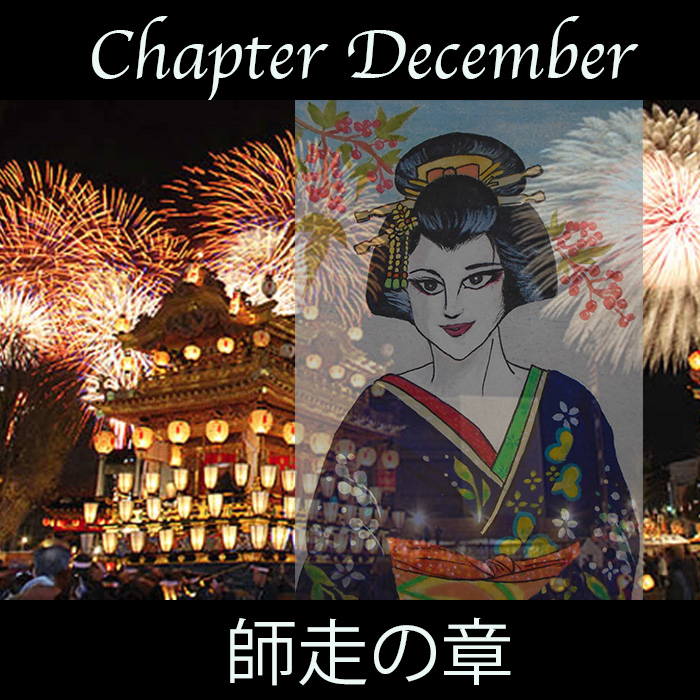
&&&&&&&&&&&&&&&&&&&&&&&&&&&&&&&&&&&&

Chichibu Festival
December 2-3
The Chichibu Night Festival (Chichibu Yomatsuri)
is the Festival of Chichibu Shrine held in
Chichibu of Saitama Prefecture.
It is held every year on December 2 and 3, with the main action taking place on
December 3.
The Chichibu Night Festival is considered one of Japan's top three festivals
to feature floats (The others Kyoto’s Gion
Festival and the Takayama Festival held in Gifu Prefecture).
Its floats are ornately decorated with lanterns, tapestries and gilded wood
carvings
and are accompanied by drum and flute music.
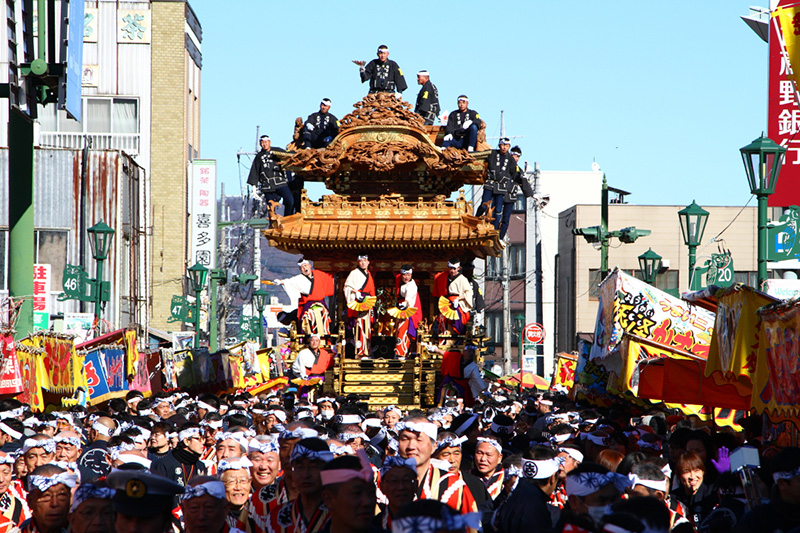
Floats decorated with lanterns look very gorgeous at night!
During the festival, the floats and fireworks colour the nights of Chichibu and
attract people.
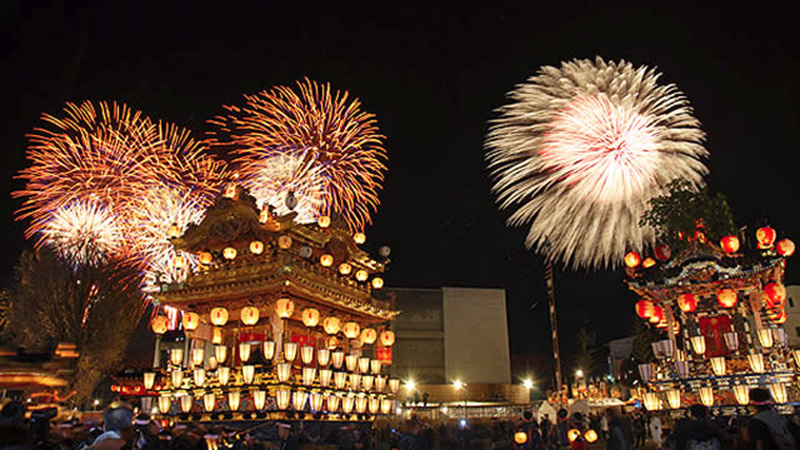
&&&&&&&&&&&&&&&&&&&&&&&&&&&&&&&&&&&&

Nobel Prize
December 10th
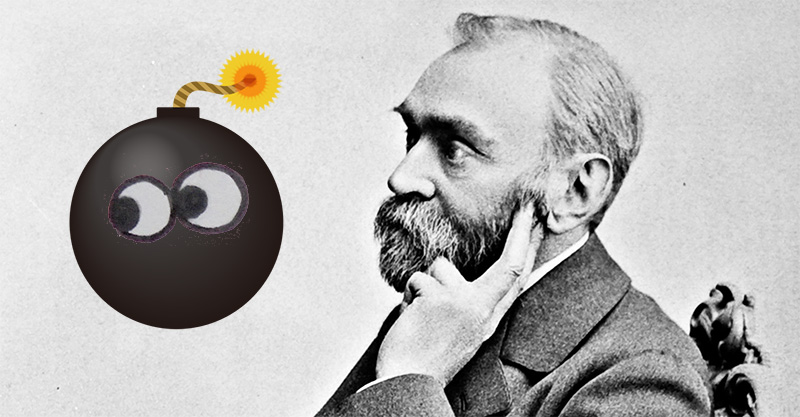
The Nobel Prizes are five separate prizes that,
according to Alfred Nobel’s will of 1895, are awarded to
"those who, during the preceding year, have conferred the greatest benefit to humankind."

Alfred Nobel was a Swedish chemist, engineer, and industrialist most famously
known for the invention of dynamite.
First Japanese person won Nobel Prize was Mr Hideo Yukawa
for his prediction of pion (1949).
Until 2021, 31 Japanese people have been awarded for Nobel Prize.
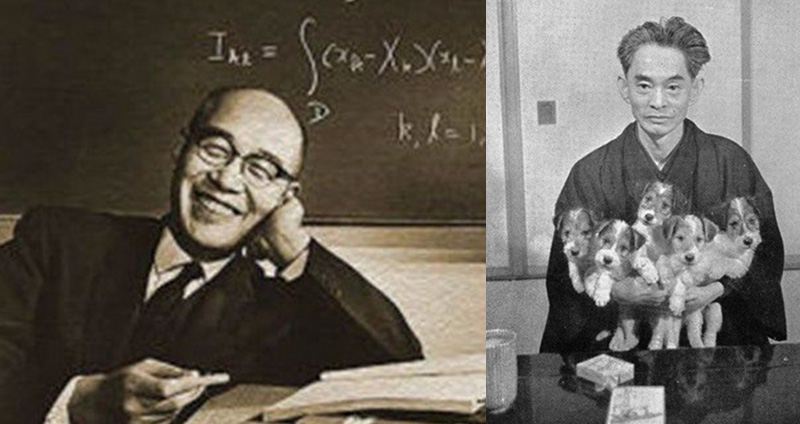
To me, most impressive Nobel Prize winner is Mr Yasunari Kawabata,
who won the prize in Literature in 1968. I’ve read his novels,
“Snow Country” and “The Dancing Girl of Izu”
and I was deeply impressed by his delicate and poetic expressions of sentences.
Besides writing, he contributed Pen International in his later years
and his life seemed to be fulfilling.
That’s the why, when he suddenly finished his own life,
the news had deep shock on people. (By Nessie RB)
&&&&&&&&&&&&&&&&&&&&&&&&&&&&&&&&&&&&

Susuharai
December 13th
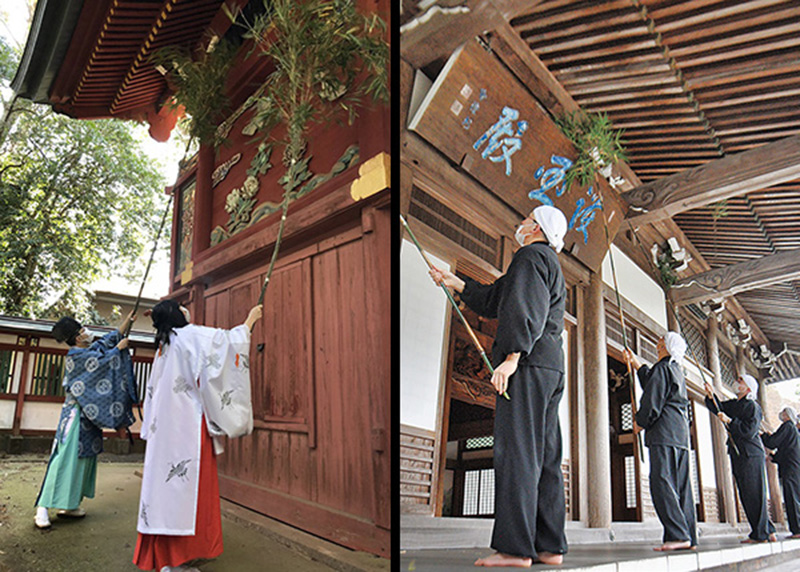
Once upon a time, Japanese people started special cleaning their houses
on December 13th to welcome the God of New Year.
Nowadays, most of Japanese people start special cleaning
just almost end of the year, but at some temples and shrines,
monks and Miko (shrine maiden) still start
cleaning on this day.

&&&&&&&&&&&&&&&&&&&&&&&&&&&&&&&&&&&&

Chushingura
December 14th

On December 14th of 1701 (It is said 1703 in some countries) of Edo Period,
47 Ako Ronin broke into Daimyo Kira’s mansion to take revenge
for their master Shogun Asano Takumi no Kami.
This vendetta incident is called, “Chushingura” and well-known as most dramatic
and impressive historical incidents of
Samurai period.
On December 14th, parade of 47 Ronin is held in various spots
including around Sengakuji Temple, which 47
Ronin’s souls are sleeping.
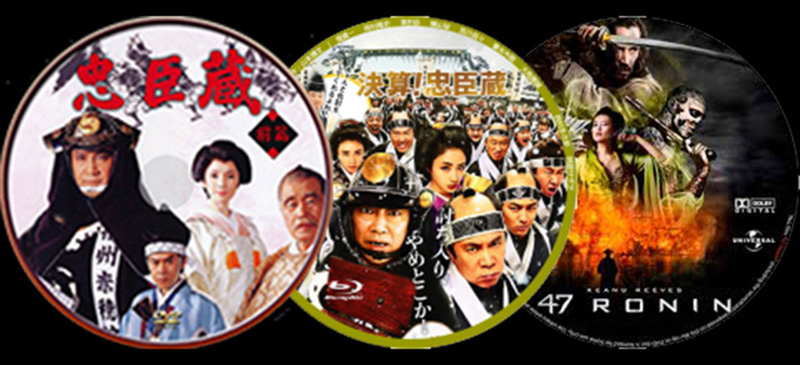
Various drama series, films and stage plays based
on this vendetta incident have been made.
We watched some of them and thought just dramatic Samurai action drama
about the story first, but when visiting graves of 47 Ronin at Sengakuji Temple
in Tokyo made us recognize that drama was truly occurred over 300 years ago,
and we couldn’t help but feel impressed deeply by their faithful spirits and bravery.
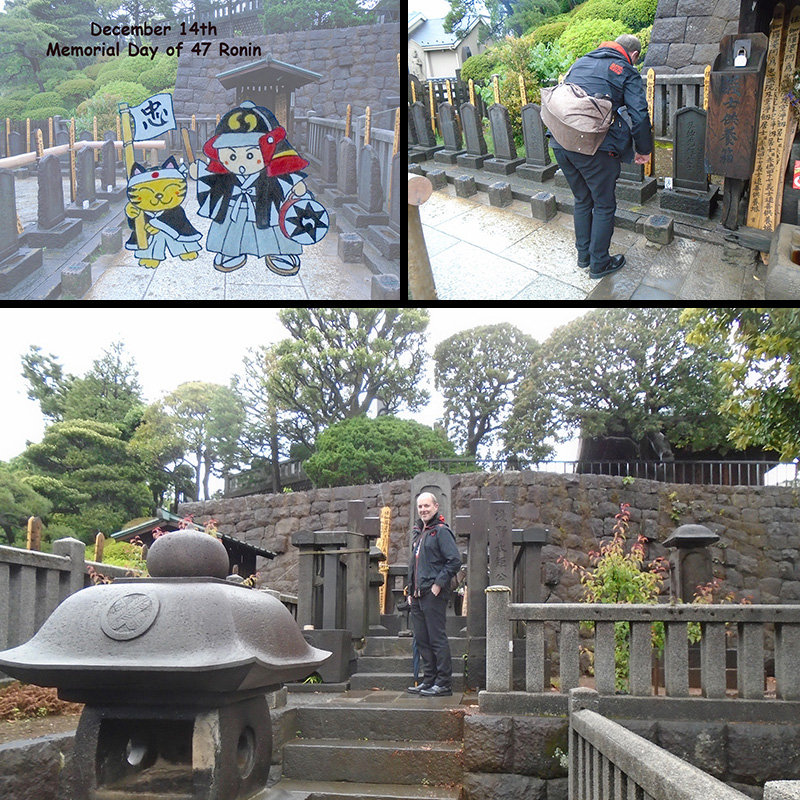
&&&&&&&&&&&&&&&&&&&&&&&&&&&&&&&&&&&&

Asakusa Tori No Ichi
December 17th
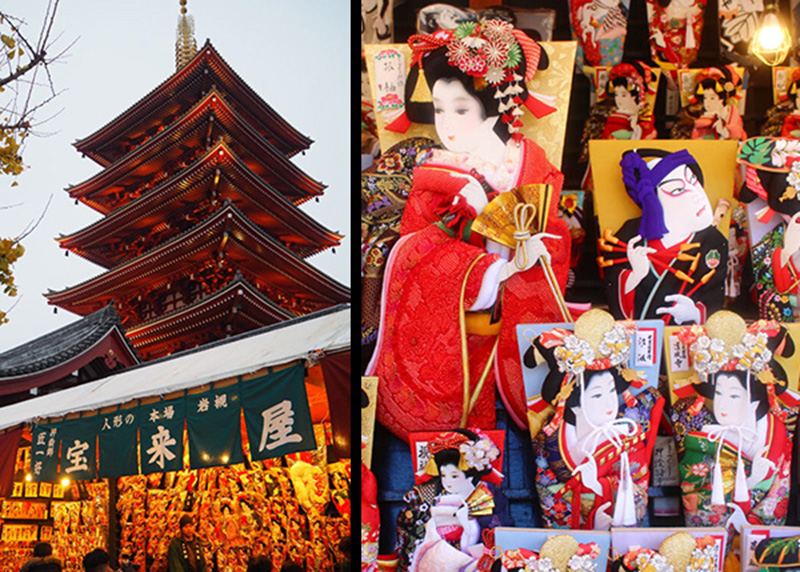
In the mid December of every year, special sale of Hagoita is held at outdoor market
of Asakusa and this sale is called, “Toshi no
Ichi”.
Hagoita are wooden rackets used for New Year sports, which is similar to
badminton.
Hagoita are also known as New Year Home Ornaments.
The paddles are decorated with various images of women in kimono,
kabuki actors, and so on.
At “Toshi no Ichi”, rackets of designs of celebrities, who are on top topic of
the year,
are sold and entertain visitors.
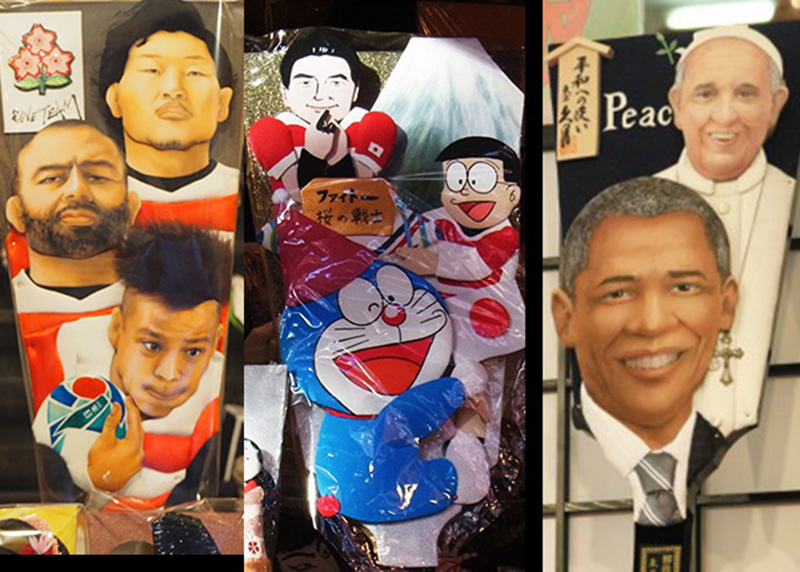
&&&&&&&&&&&&&&&&&&&&&&&&&&&&&&&&&&&&
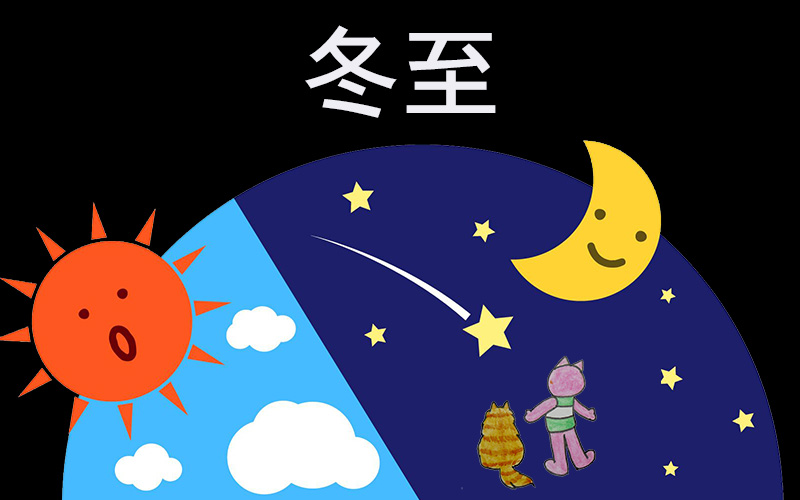
Winter Solstice
December 22nd
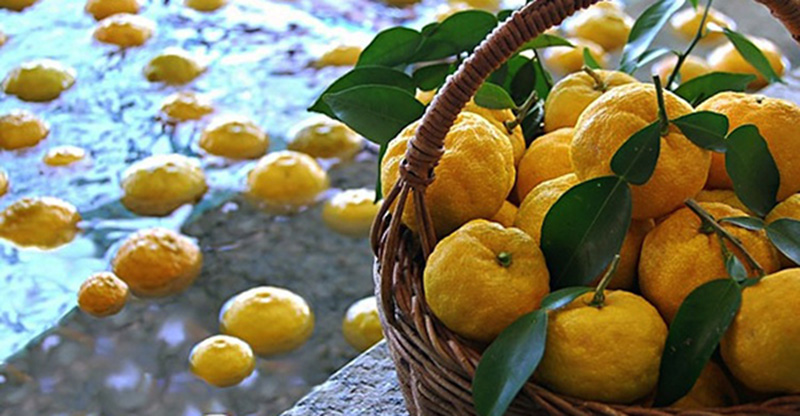
At night of Winter solstice, Japanese people at some homes
put citrus fruits Yuzu on hot bath to bring lucks of health.
Hot bath with floating Yuzu smells lovely,
and taking this hot bath make you feel healthy
and happy!!
Also, people eat Carrots, pumpkins, Satsuma orange etc.
on this day to bring fortune.
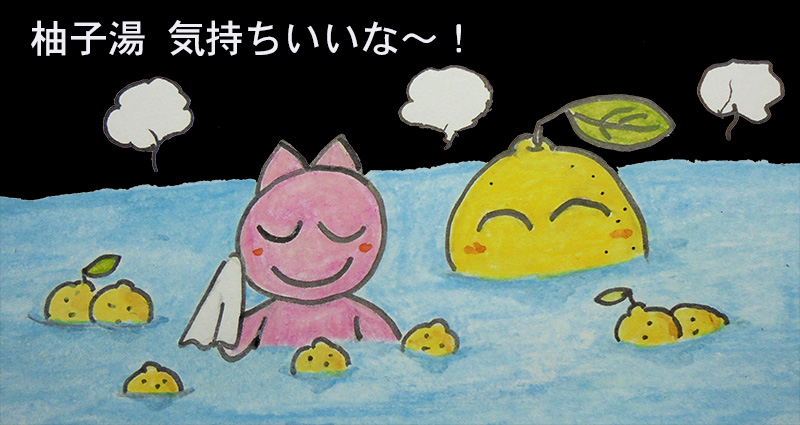
&&&&&&&&&&&&&&&&&&&&&&&&&&&&&&&&&&&&

Nengajyo
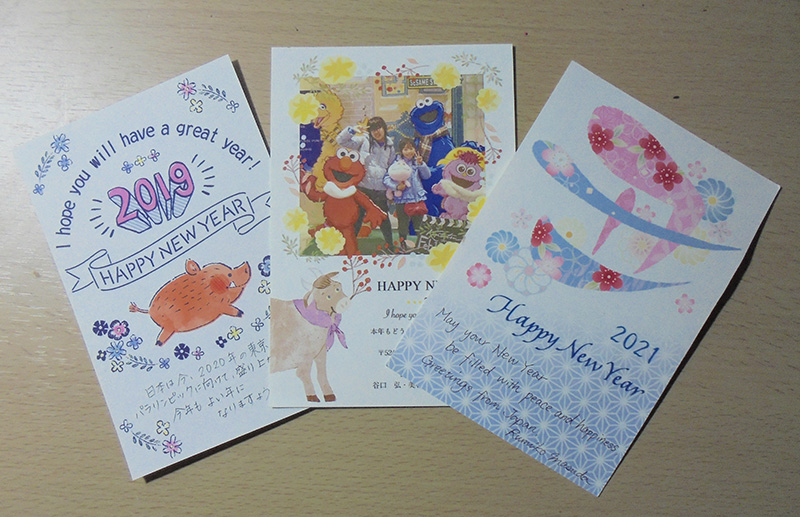
Nengajyo are postcards on which New Year’s greetings
are written along with some news or how you
are doing these days.
Many Japanese people write and send them around before Christmas
to friends, relatives, and teachers.
Around end of November, Nengajyo postcards printed illustration
of Zodiac animals of the next year start to be
sold at post offices and some stores.
Some people print photos of family members on the postcards.
Nengajyo postcards sold at post office are printed lottery numbers of New Year
Gift.
Most of Prizes of New Year gifts are stylish stamps.

&&&&&&&&&&&&&&&&&&&&&&&&&&&&&&&&&&&&

Christmas
December 25th

In Japan, Christmas is considered as a special
event for unmarried couples.
They make romantic plans to spend sweet Christmas time with their partners.
In some urban cities like Tokyo, very gorgeous Christmas ornaments
are displayed everywhere and entertain people
and make couples’ Christmas night more romantic.
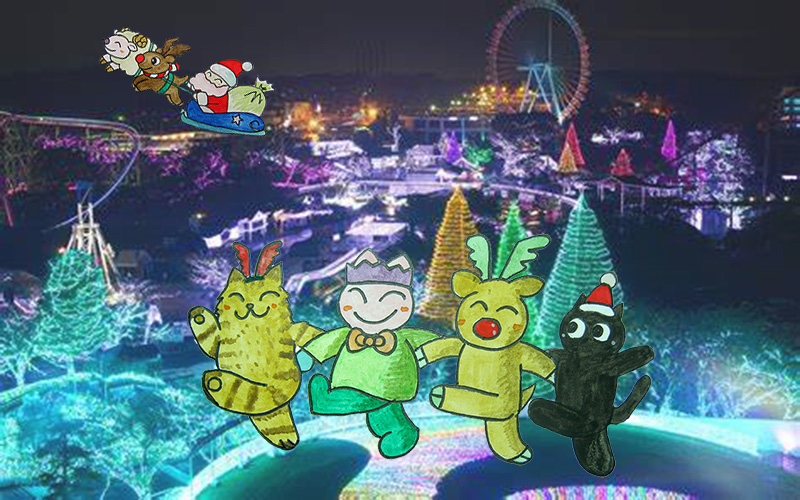
Christmas cakes made at cake shops in Japan are very stylish and decorative.
Taste is also brilliant!! (By Darren Baker)
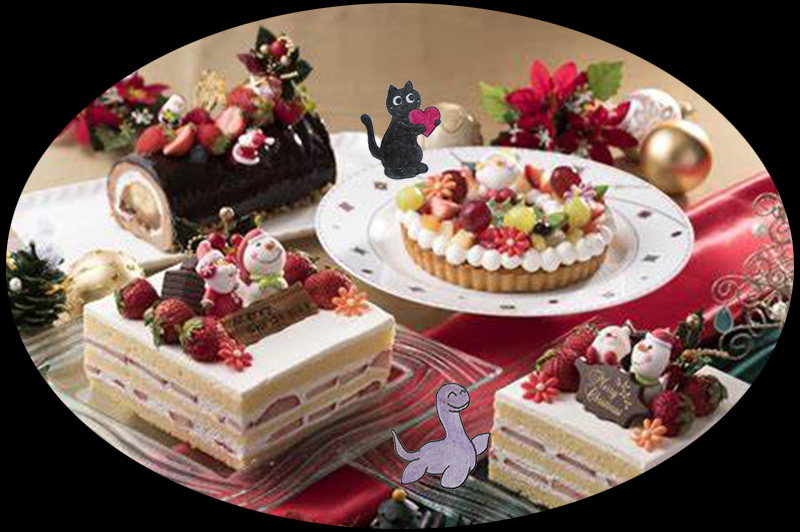
&&&&&&&&&&&&&&&&&&&&&&&&&&&&&&&&&&&&

Namahage
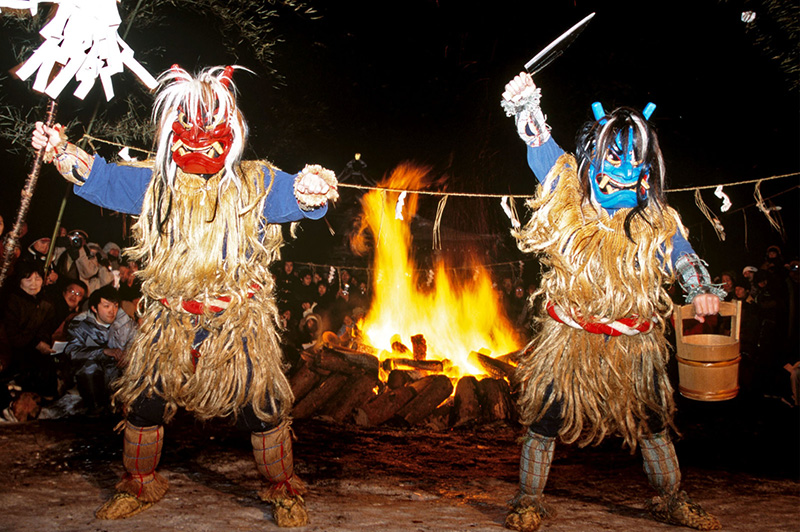
The Namahage are demon like beings portrayed by men wearing hefty Oni (ogre) masks
and traditional straw capes called Mino during a New Year's ritual,
in local northern Japanese folklore of the Oga Peninsula area of Akita prefecture.
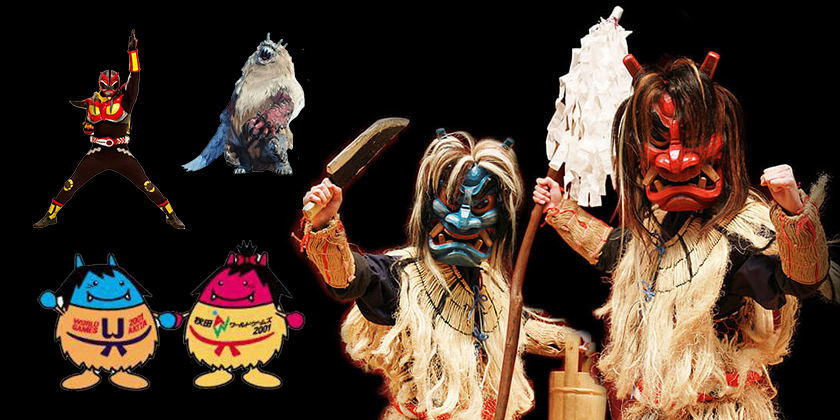
Namahage: The frightfully dressed men impersonating the oni-demons
wearing masks, dressed in long straw coats or
Mino, locally called kede or kende.
They are armed with Big Knives (albeit wooden fakes or made of paiper-mache)
and toting a Teoke ("hand pail" made of wood), march in pairs or threes
going door-to-door making rounds of people's homes, and yelling phrases like
"Are there any cry babies around?" or "Are naughty kids around?"
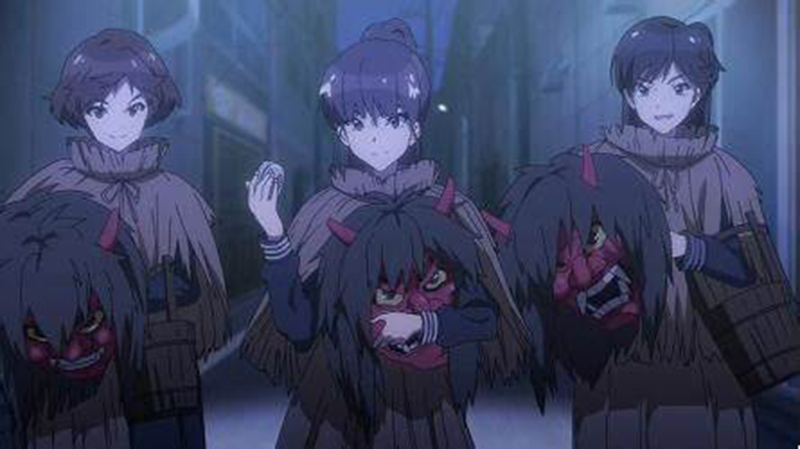
In Japan, many characters based on Namahage have been made
such as super hero, World Cup characters,
animated Namahage girl characters etc.
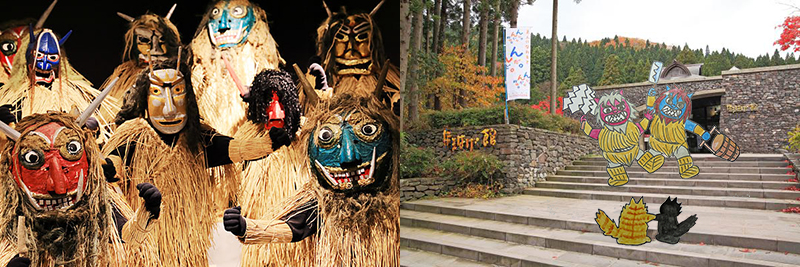
It is difficult to watch Namahage in person, but you can learn
about Namahage by visiting “Namahage Museum” or joining some Namahage tours
held in Oga Peninsula area during winter.
&&&&&&&&&&&&&&&&&&&&&&&&&&&&&&&&&&&&

Oomisoka
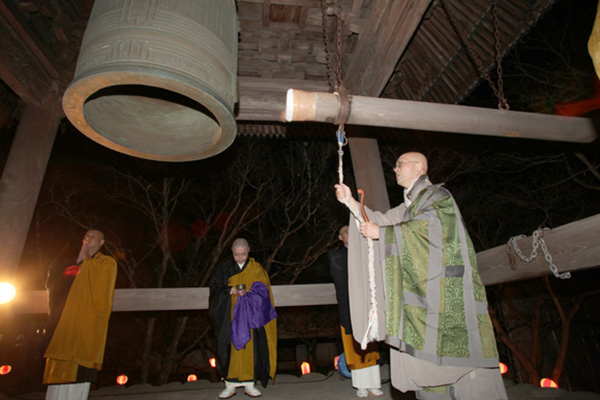
In Japan, New Year’s Eve is called, “Oomisoka.”
Housewives prepare special dishes "Osechi" for New Year’s Days
by New Year’s Eve, so that they don’t have to work over the holidays.
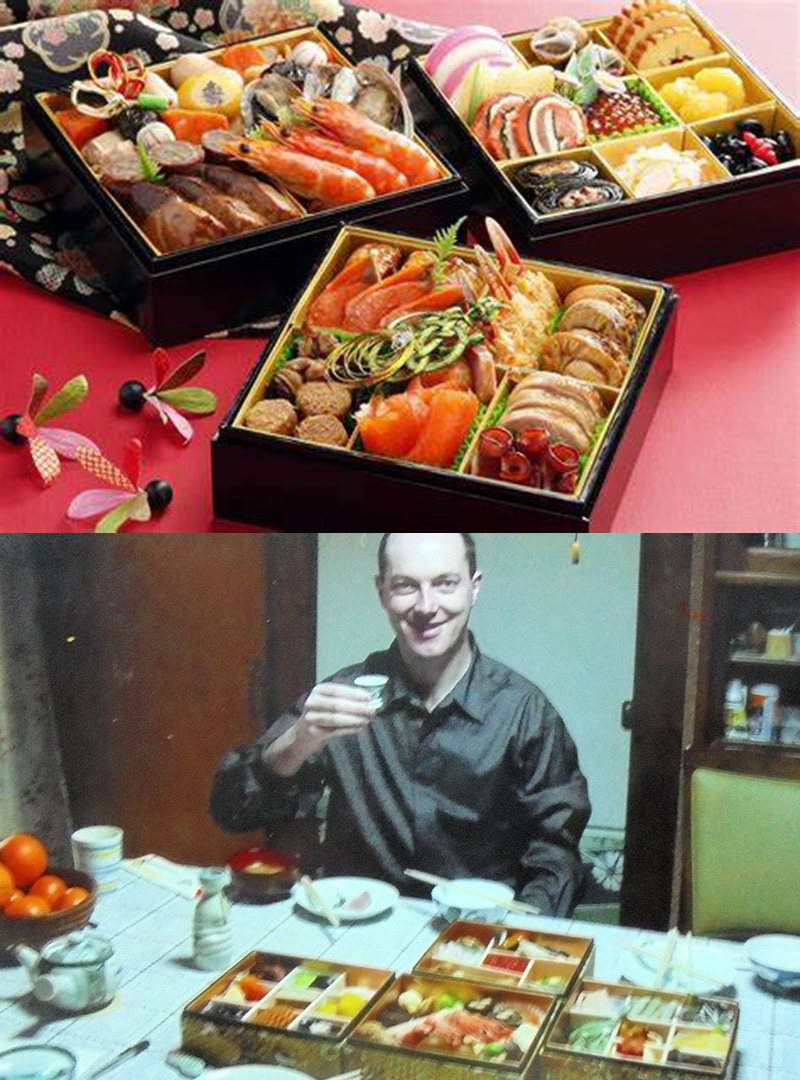
Many of families prepare for Mochi rice cakes for New Year’s Days.
They make rice cake mocha by themselves before but nowadays,
most of families order “Mochi companies”.
Some families still make by themselves in
their garden.
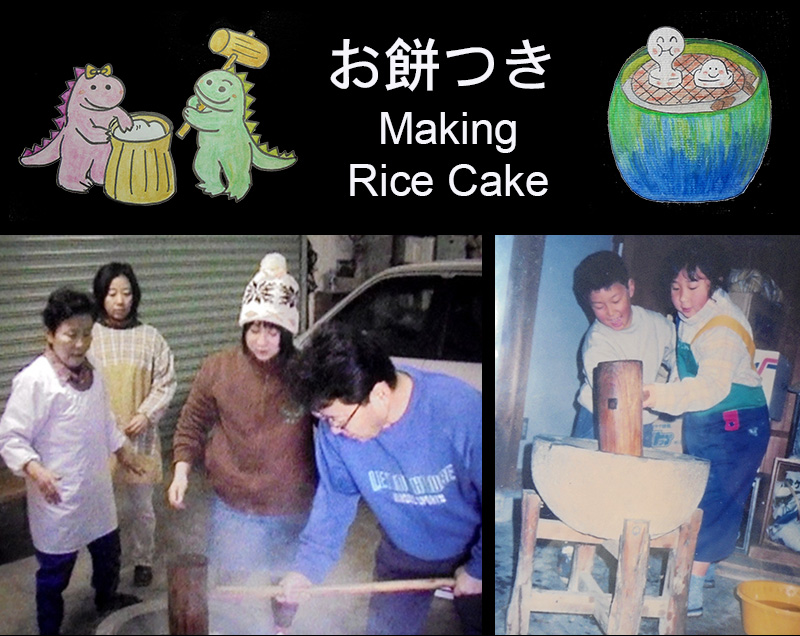
Just made rice cakes mocha are very sticky,
soft and tasty!!
There are many ways to enjoy rice cake mochi
such as Shoyu Mochi (Baked and flavoured with soy sauce”,
Kinako Mochi (Flavoured with Kinako powder and sugar),
Zenzai (Mochi in Sweet Red Bean Soup),
Yomogi Mochi (Flavoured with Japanese mugwort) and so on.
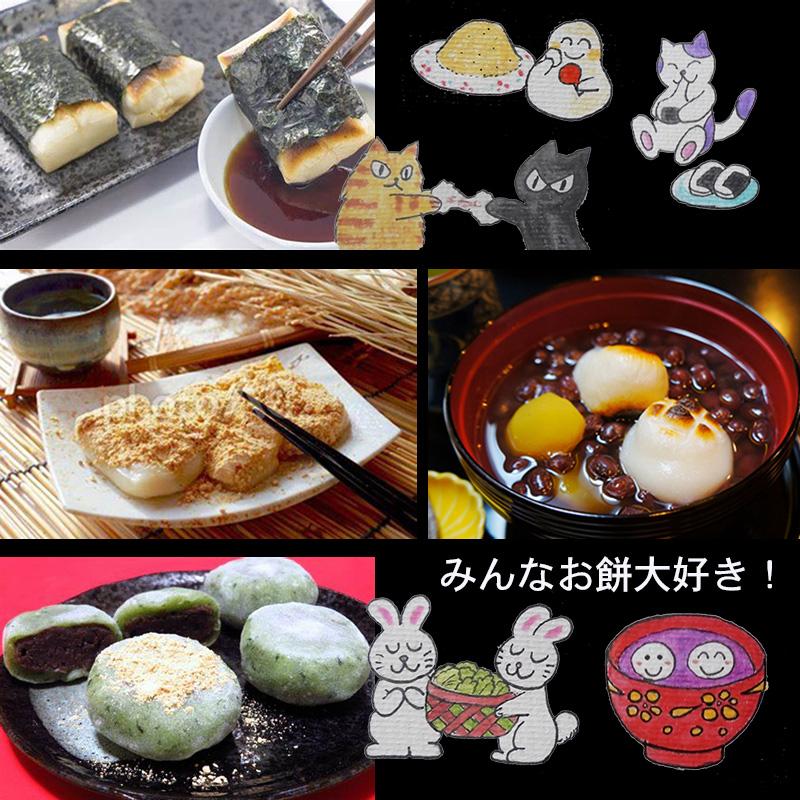
In Japan, it is customary to have year-end buckwheat noodle soup on New Year’s Eve.
This noodle soup is called, “Toshikoshi Soba.”
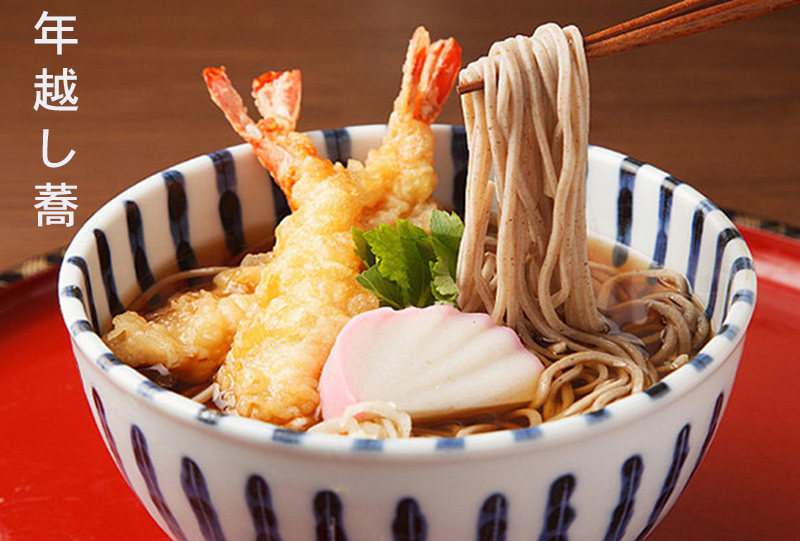
It is said that eating this noodle soup on New Year’s Eve
will bring happiness in New Year.
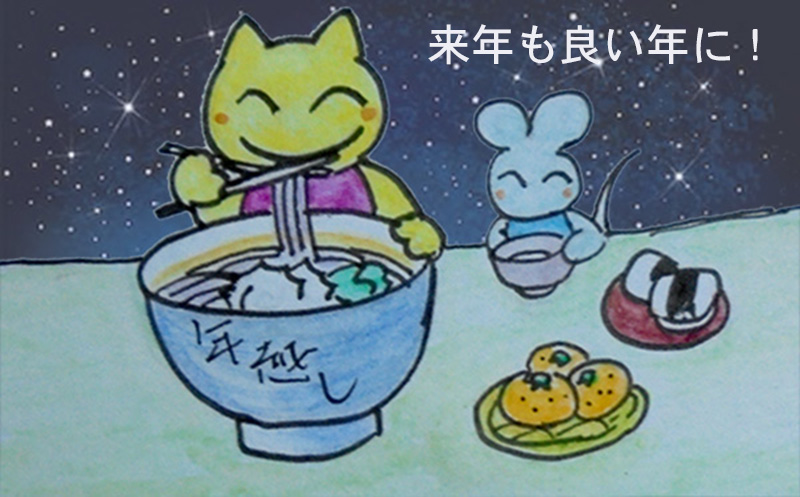
&&&&&&&&&&&&&&&&&&&&&&&&&&&&&&&&&&&&

Kouhaku Utagassen
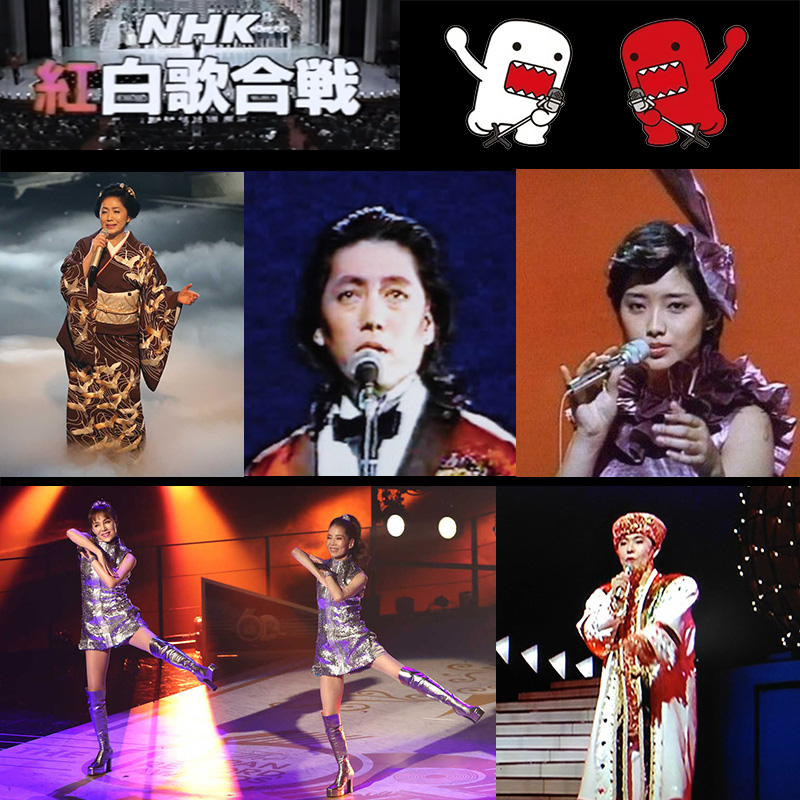
“NHK Kōhaku Uta Gassen”, more commonly known simply as Kōhaku,
is an annual New Year’s Eve television special programme produced
by Japanese public broadcaster NHK (Since
1953).
The program divides the most popular music artists of the year
into competing teams of red and white.
The "red" team or Akagumi is composed of all female artists (or groups with female vocals),
while the "white" team or Shirogumi is all male (or groups with male vocals).
At the end of the show, judges and the audience vote to decide
which group performed better
At night of New Year’s eve, a lot of people including little children
stay up until midnight to watch this program.
Many of music artists wear bright dresses or kimono for this program.
Decorations and performances for this show is so gorgeous every year.
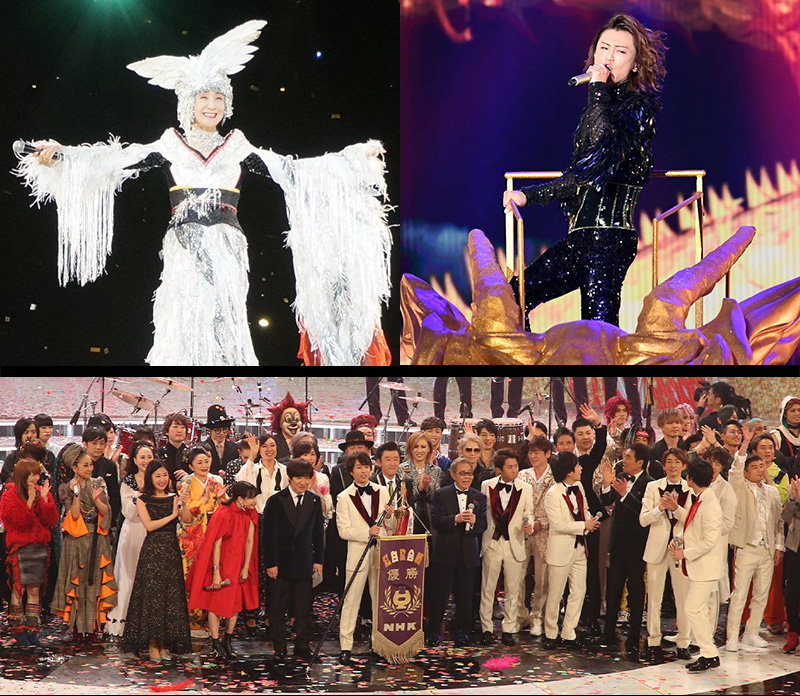
Soon after this program is finished, hundred and eight strokes of the temple
bells start.
The peals are said to drive away 108 kinds of our worldly concerns.
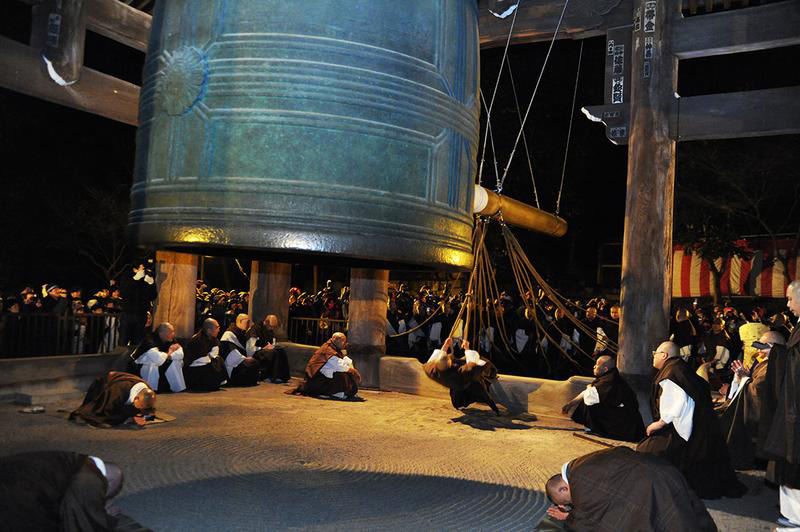
&&&&&&&&&&&&&&&&&&&&&&&&&&&&&&&&&&&&
If you have
some questions about this page,
please feel free to contact us at: